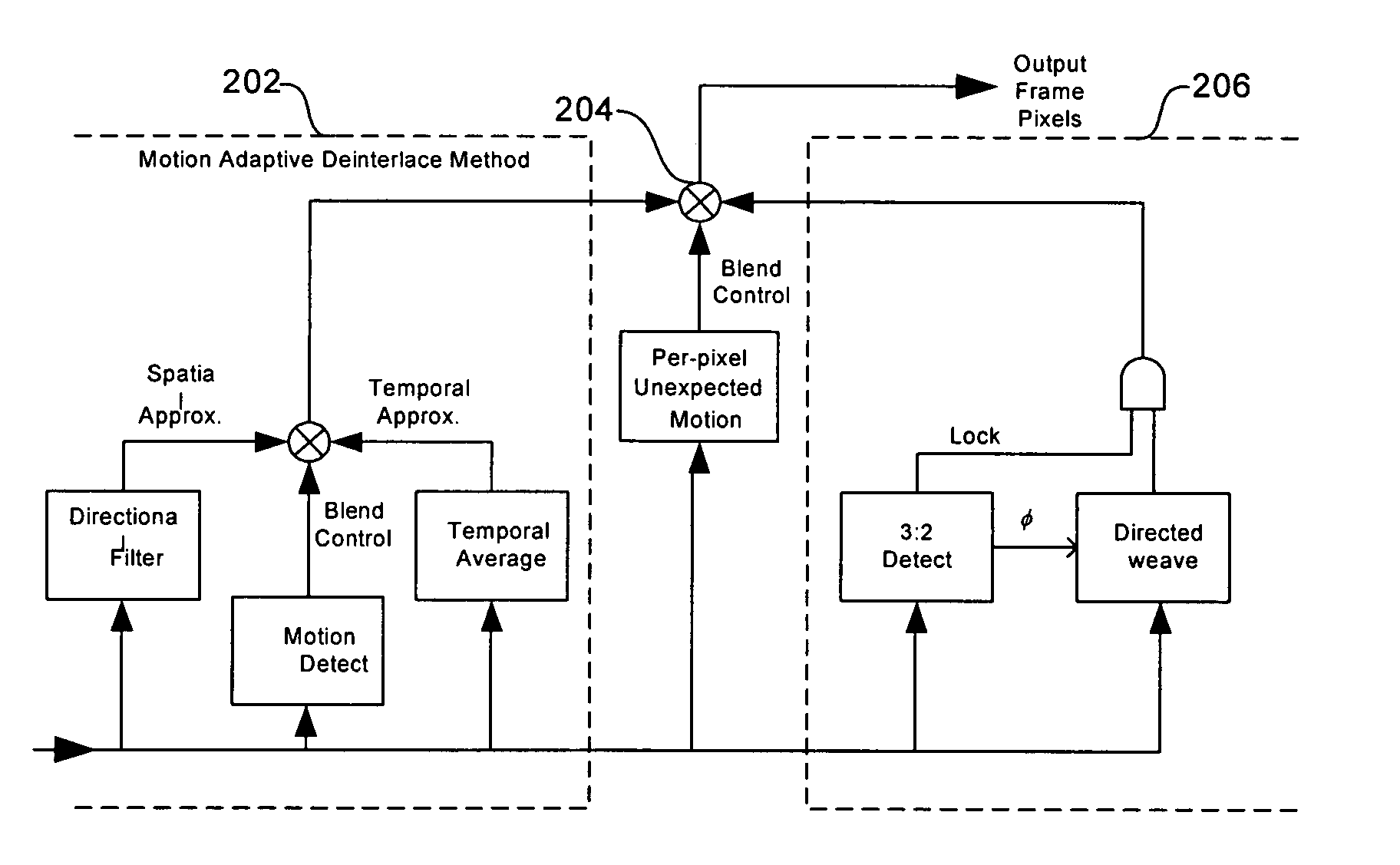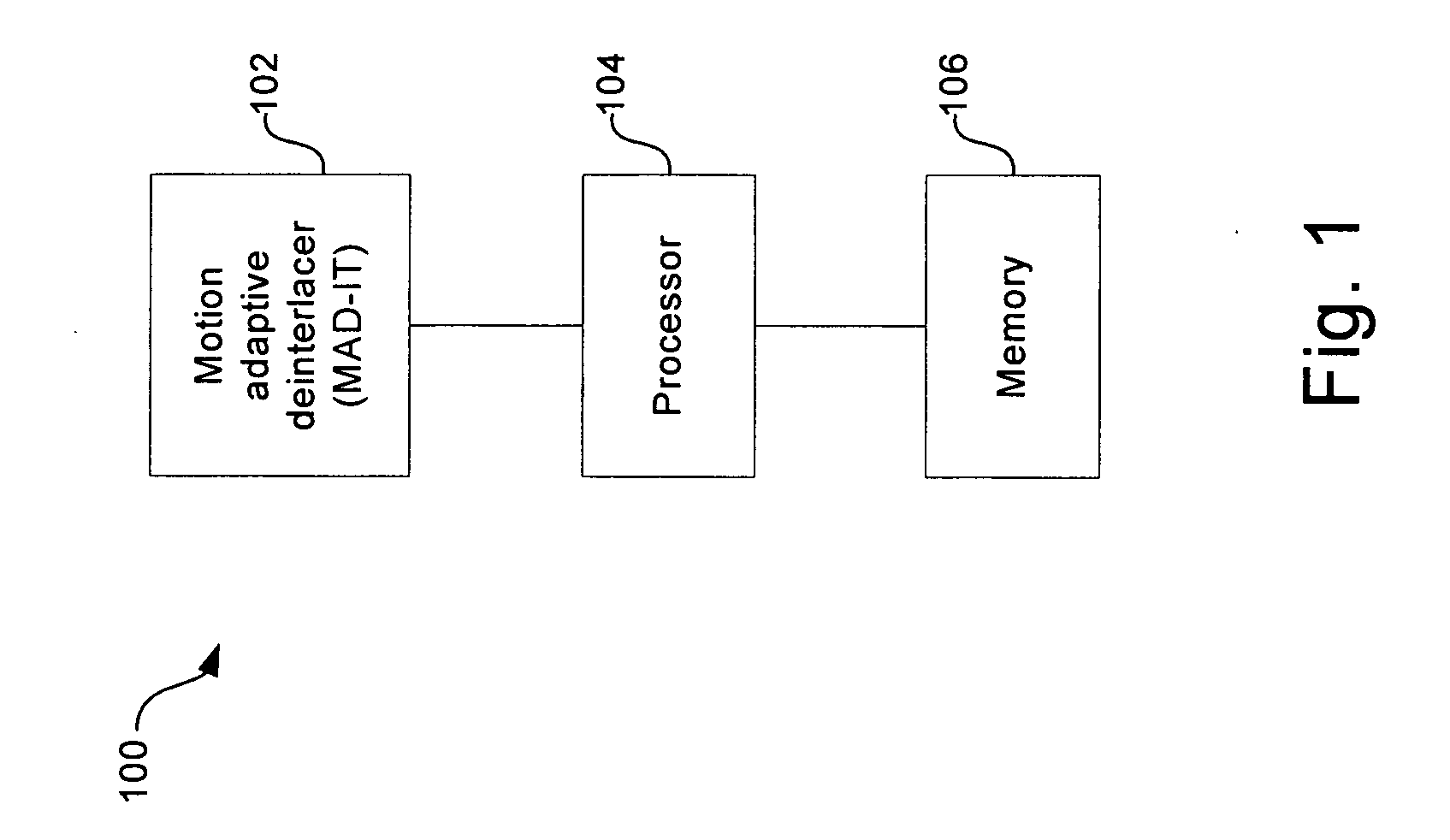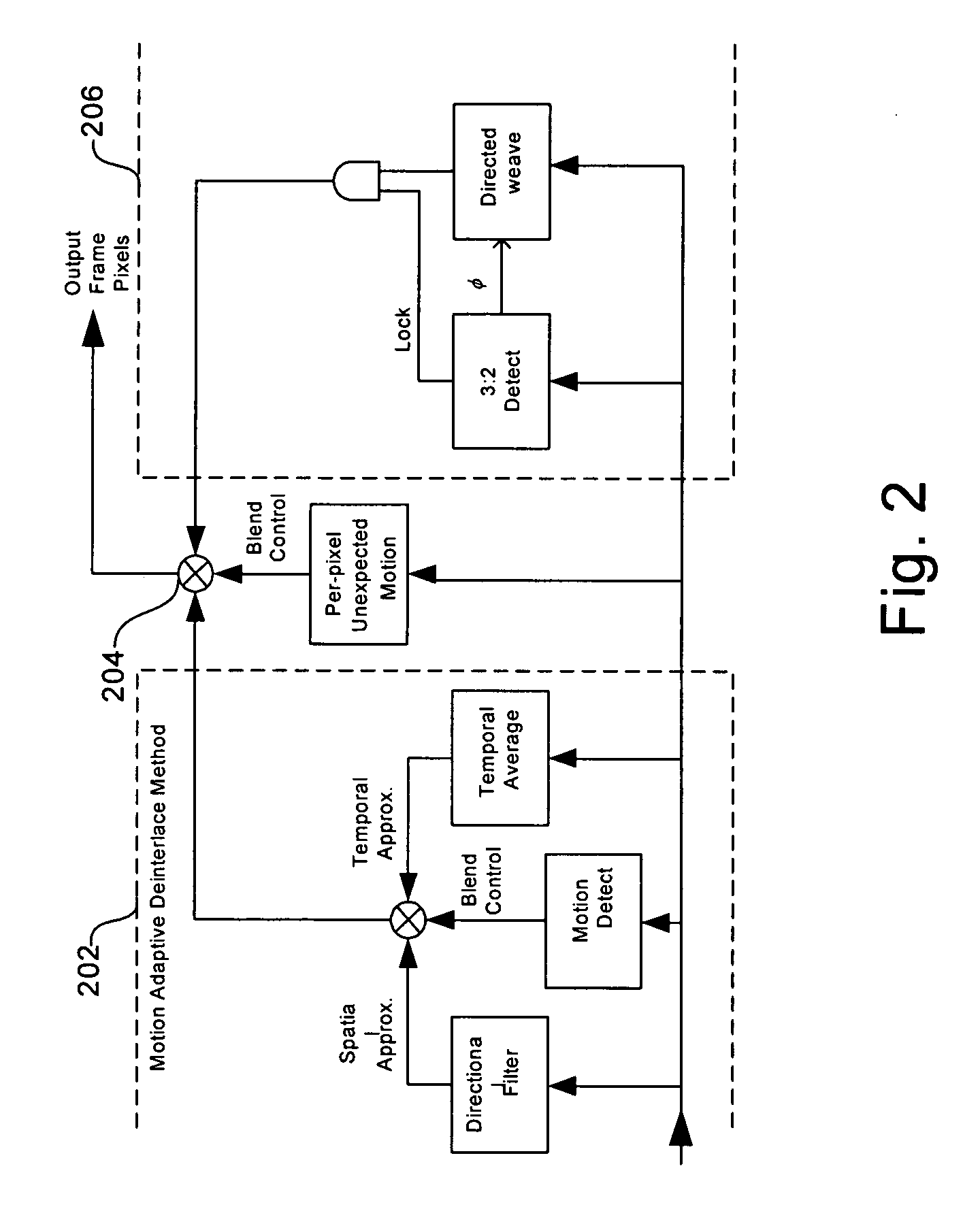Method and system for reducing the appearance of jaggies when deinterlacing moving edges
a technology of moving edges and reducing the appearance of jaggies, which is applied in the field of video processing, can solve the problems of affecting the viewing experience, affecting the motion of objects in images, and causing visual artifacts to become more prominent,
- Summary
- Abstract
- Description
- Claims
- Application Information
AI Technical Summary
Benefits of technology
Problems solved by technology
Method used
Image
Examples
Embodiment Construction
[0037] Certain embodiments of the present invention relate to processing video. More specifically, certain embodiments of the invention relate to a method and system for reducing the appearance of jaggies when deinterlacing moving edges. While the following discusses detecting a direction of an edge at a low-angle, it should be understood that an embodiment of the present invention may detect all angles, including low angles.
[0038]FIG. 1 illustrates a block diagram of an exemplary architecture for positioning of a motion adaptive deinterlacer, in accordance with an embodiment of the present invention. Referring to FIG. 1, the deinterlacer system 100 may comprise a motion adaptive deinterlacer with inverse telecine (MAD-IT) 102, a processor 104, and a memory 106. The MAD-IT 102 may comprise suitable logic, code, and / or circuitry that may be adapted to deinterlace video fields. The processor 104 may comprise suitable logic, code, and / or circuitry that may be adapted to control the op...
PUM
 Login to View More
Login to View More Abstract
Description
Claims
Application Information
 Login to View More
Login to View More - R&D
- Intellectual Property
- Life Sciences
- Materials
- Tech Scout
- Unparalleled Data Quality
- Higher Quality Content
- 60% Fewer Hallucinations
Browse by: Latest US Patents, China's latest patents, Technical Efficacy Thesaurus, Application Domain, Technology Topic, Popular Technical Reports.
© 2025 PatSnap. All rights reserved.Legal|Privacy policy|Modern Slavery Act Transparency Statement|Sitemap|About US| Contact US: help@patsnap.com



